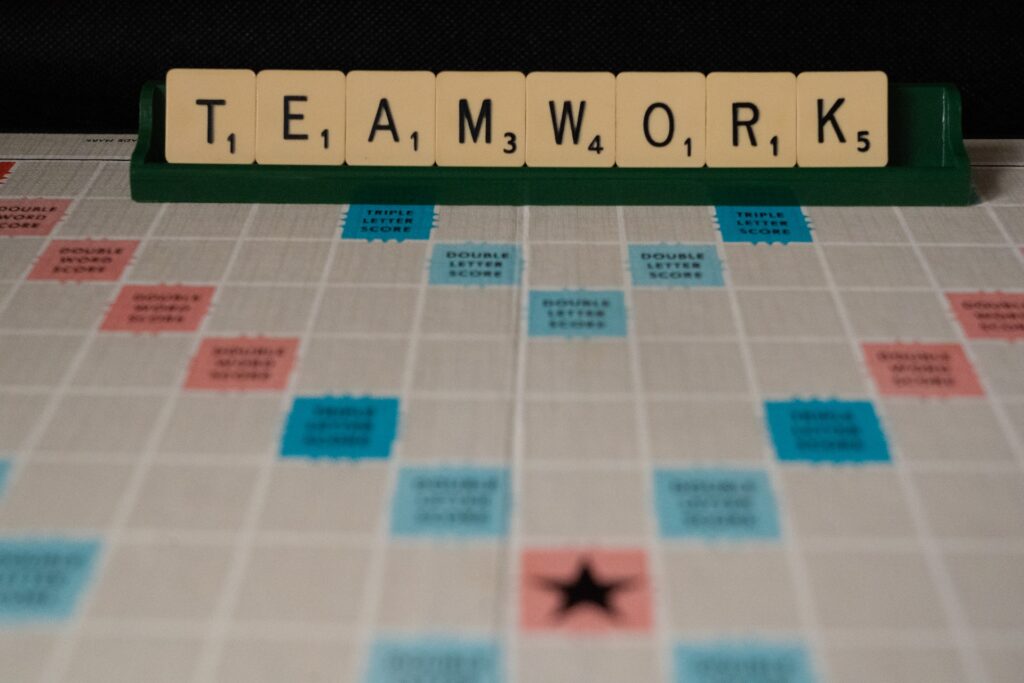BLOG
Finds and Interests

Image: Unsplash
We all know that great things happen when people work together, but building a truly collaborative culture is easier said than done. Occasionally, meetings become social gatherings without a clear focus; they serve as substitutes for real work. Whether you’re leading a team or working within one, it can be challenging to create an environment where everyone feels comfortable sharing ideas and working towards a common goal.
Here are a few simple—and often overlooked—keys to increasing team collaboration in a workplace.
1. Keep Teams Small
To build strong teams, keep them small. Any more than five members and you risk losing the close-knit feeling that makes collaborative teams successful. Small teams are more cohesive and have an easier time communicating and working together than a large team does. Each member has a greater chance to contribute meaningfully.
2. Set Clear Outcomes
The most effective way to increase team collaboration is by setting clear outcomes. Without a shared understanding of what the team is trying to accomplish, members will be working at cross purposes, resulting in frustration.
The first step in setting clear outcomes is to make sure that everyone on the team understands the company’s overall goals. What are the company’s top priorities? What are the key metrics that you’re trying to impact? Once everyone is aligned on these basics, you can begin to delve into specific objectives for your team.
What are the most important projects that need to be completed in the next quarter? Which tasks are tasked with completing them? By mapping out these details, you’ll ensure that everyone knows what needs to be done and when it needs to be done by.
Review your team’s progress against its goals periodically to keep everyone accountable and identify areas where adjustments are needed.
3. Stay On Topic
Staying on topic is one of the most important things you can do to increase team collaboration. The role of “topic keeper” belongs to the group leader or manager. Keep everyone focused on the task at hand and avoid side conversations and tangents.
It is important to remind someone to stay focused on the task at hand if they stray off topic. It’s also essential to not get bogged down in details; sometimes, it’s best to take a step back and look at the big picture. By staying on topic, everyone can work efficiently and effectively together.
4. Speak Plainly
To promote team collaboration, it’s important to communicate clearly and concisely. Using plain language instead of jargon and technical language ensures that what is being said is understood by all. Avoid buzzwords like “leading edge,” “core competency,” “value proposition,” “mission-critical,” and other lingo that people use to sound smart. Communicate, don’t obfuscate.

Image: Unsplash
5. Engage In Active Listening
We use nonverbal cues such as eye contact and body language to let the speaker know we are engaged in the conversation. Avoid distractions such as checking phones and daydreaming when practicing active listening.
Also, paraphrase what the speaker has said to ensure that we have understood them correctly. Active listening requires us to be open-minded and curious and to resist the temptation to judge or offer solutions prematurely. When we truly listen to others, they feel heard and valued, which builds trust and creates a foundation for collaboration.
6. Define Responsibilities and Authority
When defining responsibilities, be clear. Empowering employees is crucial to increasing team collaboration. Give them the tools they need to do their jobs well and trust their judgment and initiative. Make sure you assign specific tasks to specific people or teams and identify who is accountable for what. This will prevent confusion and allow everyone to focus on their own responsibilities.
You should also clarify authority early on. Who has the final say on decisions? Who can sign off on projects? By clarifying these things early on, you can avoid conflict later.
When everyone feels involved and invested, they’re more likely to work effectively together. Communicate openly and solicit feedback so everyone feels like they have a say in how things are done.
The Bottom Line: Keep It Simple
Meetings are sometimes referred to as “where businesses go to die.” It doesn’t have to be that way. Running tight, collaborative meetings is essential for growing a business. Without them, all you have is a coffee klatch.
Will Seippel is the CEO and founder of WorthPoint®, the world’s largest provider of information about art, antiques, and collectibles. An Inc. 500 Company, WorthPoint is used by individuals and organizations seeking credible valuations on everything from cameras to coins. WorthPoint counts the Salvation Army, Habitat for Humanity, and the IRS among its clients.